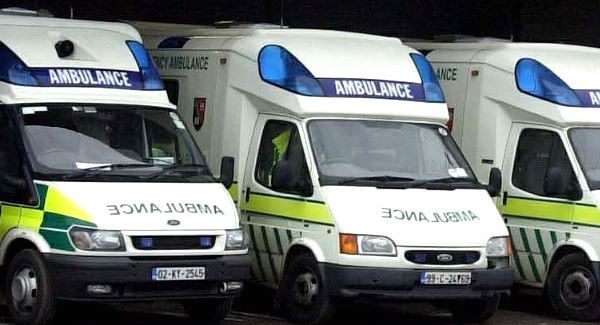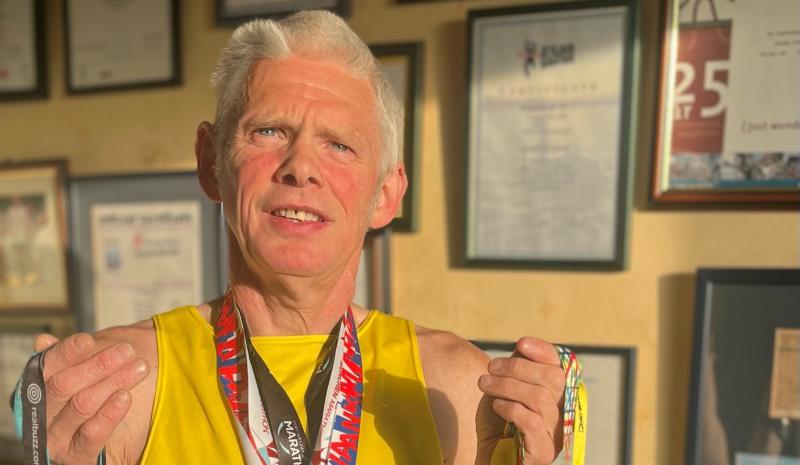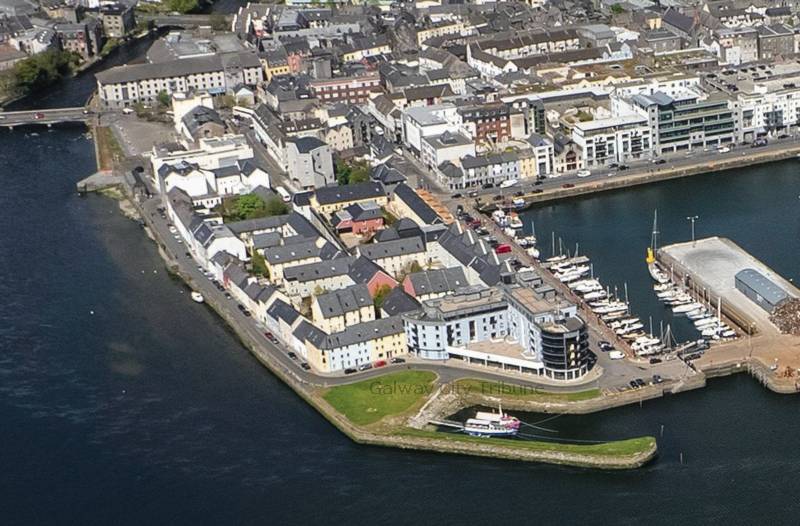News
Galway ambulance delays putting lives at risk

Patients’ lives are being put at risk because ambulances are forced to park outside hospitals across the West for hours.
New figures obtained by the Connacht Tribune reveal that more than 500 ambulances a month are parked outside University Hospital Galway (UHG) for more than a half an hour – 95 of them were waiting over an hour. The official figures were released by the Health Service Executive (HSE) to Denis Naughten, Independent TD for the new Roscommon Galway constituency following a Parliamentary Question.
The recommended time is no more than a 20 minutes wait in hospital car parks.
Deputy Naughten said the figures are shocking and reveal how in total ambulances spent 532 hours parked outside the Emergency Department of UHG in the month of April, the latest month for which data was made available.
The figures show that 20% of all ambulances that arrive at Portiuncula Hospital in Ballinasloe are waiting for over one hour in the car park.
“It is a deplorable situation and I have no doubt that lives are at risk,” said Deputy Naughten.
“It is clear that the overcrowding caused by the closure of Roscommon A&E is putting huge pressure on Portiuncula, with one in every five ambulances forced to wait more than an hour to discharge their patient into the care of hospital staff.”
These delays or “turnaround times” are a measure of how long it takes an ambulance to clear a hospital after its arrival with a patient. It includes patient handover to clinical personnel within the hospital and the time taken to clean and replenish ambulances to be ready for the next call.
Turnaround delays have a direct impact on overall response times, as ambulances are held back from taking on their next 999 call, said Deputy Naughten.
He said the reason for the delays is twofold: The Emergency Department’s are overcrowded and have no beds or trolleys to accommodate the ambulance patients; or staff in the Emergency Department are too busy tied-up with more serious cases and so ambulance staff can’t ‘sign over’ their patients.
He said at one point last November, every ambulance that was stationed at Roscommon, Loughrea, and Ballinasloe was parked up outside UHG, with repercussions for ambulance response times across the West.
Deputy Naughten said: “This disclosure is nothing short of deplorable as it means that these ambulances are not available to respond to the next 999 call which in some instances could by hours away from the nearest emergency department.
“The figures clearly highlight the need to properly resource the emergency departments in Portiuncula and University Hospital Galway in order to meet the demands which are being placed upon them.
“However, it also again highlights the lack of capacity within the ambulance service, and the need to provide additional ambulances and crews to operate the new ambulance stations at Tuam and Loughglynn, in West Roscommon. Is it any wonder that the National Ambulance Service is failing to meet the HIQA target of having an ambulance at the scene of a life threatening emergency within 18 minutes?
“These figures are just another example of where the emergency services are failing the public who rely upon them due to inadequate resourcing, which effectively means that we have death by geography, for those who are forced to rely on the ambulance service to get to hospital.”
Connacht Tribune
West has lower cancer survival rates than rest

Significant state investment is required to address ‘shocking’ inequalities that leave cancer patients in the West at greater risk of succumbing to the disease.
A meeting of Regional Health Forum West heard that survival rates for breast, lung and colorectal cancers than the national average, and with the most deprived quintile of the population, the West’s residents faced poorer outcomes from a cancer diagnosis.
For breast cancer patients, the five-year survival rate was 80% in the West versus 85% nationally; for lung cancer patients it was 16.7% in the west against a 19.5% national survival rate; and in the West’s colorectal cancer patients, there was a 62.6% survival rate where the national average was 63.1%.
These startling statistics were provided in answer to a question from Ballinasloe-based Cllr Evelyn Parsons (Ind) who said it was yet another reminder that cancer treatment infrastructure in the West was in dire need of improvement.
“The situation is pretty stark. In the Western Regional Health Forum area, we have the highest incidence of deprivation and the highest health inequalities because of that – we have the highest incidences of cancer nationally because of that,” said Cllr Parsons, who is also a general practitioner.
In details provided by CEO of Saolta Health Care Group, which operates Galway’s hospitals, it was stated that a number of factors were impacting on patient outcomes.
Get the full story in this week’s Connacht Tribune, on sale in shops now, or you can download the digital edition from www.connachttribune.ie. You can also download our Connacht Tribune App from Apple’s App Store or get the Android Version from Google Play.
Connacht Tribune
Marathon Man plans to call a halt – but not before he hits 160 races

On the eve of completing his 150th marathon, an odyssey that has taken him across 53 countries, Loughrea’s Marathon Man has announced that he is planning to hang up his running shoes.
But not before Jarlath Fitzgerald completes another ten races, making it 160 marathons on the occasion of his 60th birthday.
“I want to draw the line in 2026. I turn 57 in October and when I reach 60 it’s the finishing line. The longer races are taking it out of me. I did 20 miles there two weeks ago and didn’t feel good. It’s getting harder,” he reveals.
“I’ve arthritis in both hips and there’s wear and tear in the knees.”
We speak as he is about to head out for a run before his shift in Supervalu Loughrea. Despite his physical complaints, he still clocks up 30 miles every second week and generally runs four days a week.
Jarlath receives injections to his left hip to keep the pain at bay while running on the road.
To give his joints a break, during the winter he runs cross country and often does a five-mile trek around Kylebrack Wood.
He is planning on running his 150th marathon in Cork on June 4, where a group of 20 made up of work colleagues, friends and running mates from Loughrea Athletics Club will join him.
Some are doing the 10k, others are doing the half marathon, but all will be there on the finishing line to cheer him on in the phenomenal achievement.
Get the full story in this week’s Connacht Tribune, on sale in shops now, or you can download the digital edition from www.connachttribune.ie. You can also download our Connacht Tribune App from Apple’s App Store or get the Android Version from Google Play.
CITY TRIBUNE
Galway ‘masterplan’ needed to tackle housing and transport crises

From the Galway City Tribune – An impassioned plea for a ‘masterplan’ that would guide Galway City into the future has been made in the Dáil. Galway West TD Catherine Connolly stated this week that there needed to be an all-inclusive approach with “vision and leadership” in order to build a sustainable city.
Deputy Connolly spoke at length at the crisis surrounding traffic and housing in Galway city and said that not all of the blame could be laid at the door of the local authority.
She said that her preference would be the provision of light rail as the main form of public transport, but that this would have to be driven by the government.
“I sat on the local council for 17 years and despaired at all of the solutions going down one road, metaphorically and literally. In 2005 we put Park & Ride into the development plan, but that has not been rolled out. A 2016 transport strategy was outdated at the time and still has not been updated.
“Due to the housing crisis in the city, a task force was set up in 2019. Not a single report or analysis has been published on the cause of the crisis,” added Deputy Connolly.
She then referred to a report from the Land Development Agency (LDA) that identified lands suitable for the provision of housing. But she said that two-thirds of these had significant problems and a large portion was in Merlin Park University Hospital which, she said, would never have housing built on it.
In response, Minister Simon Harris spoke of the continuing job investment in the city and also in higher education, which is his portfolio.
But turning his attention to traffic congestion, he accepted that there were “real issues” when it came to transport, mobility and accessibility around Galway.
“We share the view that we need a Park & Ride facility and I understand there are also Bus Connects plans.
“I also suggest that the City Council reflect on her comments. I am proud to be in a Government that is providing unparalleled levels of investment to local authorities and unparalleled opportunities for local authorities to draw down,” he said.
Then Minister Harris referred to the controversial Galway City Outer Ring Road which he said was “struck down by An Bord Pleanála”, despite a lot of energy having been put into that project.
However, Deputy Connolly picked up on this and pointed out that An Bord Pleanála did not say ‘No’ to the ring road.
“The High Court said ‘No’ to the ring road because An Bord Pleanála acknowledged it failed utterly to consider climate change and our climate change obligations.
“That tells us something about An Bord Pleanála and the management that submitted such a plan.”
In the end, Minister Harris agreed that there needed to be a masterplan for Galway City.
“I suggest it is for the local authority to come up with a vision and then work with the Government to try to fund and implement that.”












